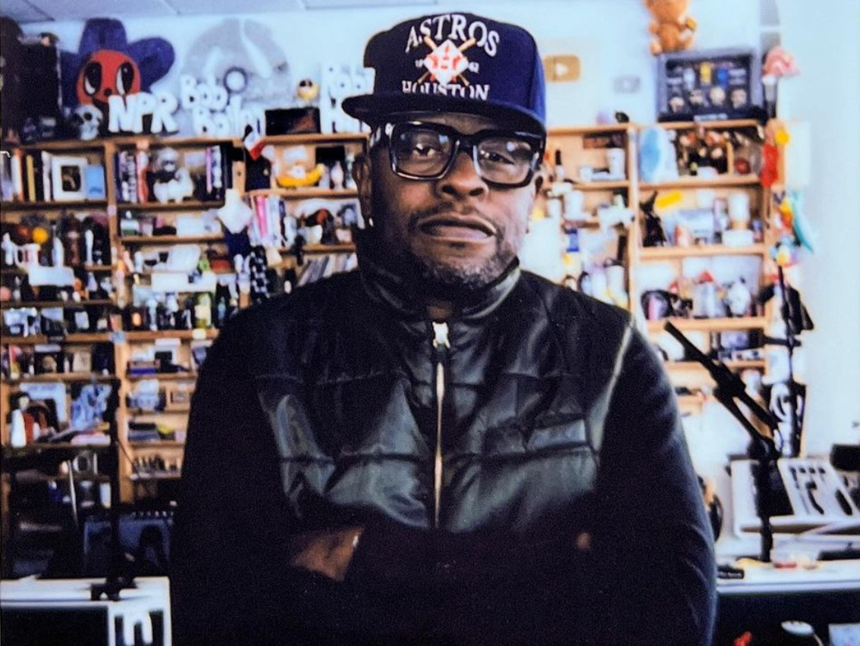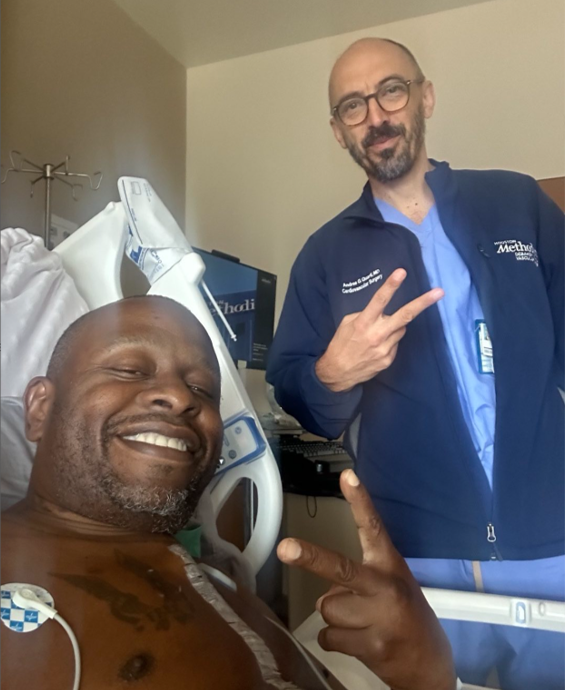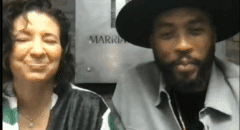 Rapper and hip-hop icon Scarface has been very open and candid about his health journey these past few years. From his deathly battle with COVID to his much-needed kidney transplant, made possible by his son, Chris Jordan, giving him a transplant in 2021.
Rapper and hip-hop icon Scarface has been very open and candid about his health journey these past few years. From his deathly battle with COVID to his much-needed kidney transplant, made possible by his son, Chris Jordan, giving him a transplant in 2021.
When remembering his life-saving transplant, he got emotional.
“I’m so proud of you [he said looking at Chris],” Scarface posted. “I love you too much. You saved my m*thaf*ckin’ life. You low down m*thaf*cka. You’re selfish. Won’t let a n-gga die. That n-gga will not let me die [laughs]. I ain’t gonna tear up in here in front of all these people on Instagram Live.”
The most recent health issue ‘Face underwent was open-heart surgery just a few weeks ago. But he is assuring fans that he was doing fine just in time for the 2025 Grandmaster Awards in Las Vegas.
He posted a picture of himself on Instagram, smiling ear to ear as he made his way to the stage, with a caption that reads, “6wks ago I underwent open heart surgery, to be upright and smiling today shows you that God aint nothing to play with… and again I say, I’m grateful, it could’ve went either way, yet I’m still alive…”
In an Instagram post on Tuesday (October 8), the Geto Boys legend shared that he went into the hospital this past summer for scheduled surgery to repair an aortic aneurysm and a “leaky valve,” but “something crazy happened” when doctors opened him up.
Alongside a photo of him and his surgeon, Dr. Andrea Quarti, he wrote: “This is the man, one of the most sought after surgeons in the world, when I was told, ‘this Dr. is hard to get’ he’s one of the best if not THE BEST.
“When I woke up to have a scheduled aortic aneurysm and leaky valve repaired something crazy happened, when he got me cut open, my aneurysm had torn the entire circumference of my aorta (certain death).”
Fortunately for Face Mob, the near-fatal discovery was handled correctly by the surgical talents of Dr. Quarti.
What Condition/Disease Did Scarface Have?
An aortic aneurysm is a bulge that occurs in the wall of the body’s main artery, called the aorta. The aorta carries blood from the heart to the body. Aortic aneurysms can occur anywhere in the aorta. They may be tube-shaped or round.
Aortic aneurysms include two types:
- Abdominal aortic aneurysm. An abdominal aortic aneurysm occurs along the part of the aorta that passes through the belly area.
- Thoracic aortic aneurysm. A thoracic aortic aneurysm occurs along the part of the aorta that passes through the chest cavity.
Some people may have both types of aortic aneurysms. Having an aortic aneurysm increases the risk of developing a tear in the inner layer of the wall of the aorta. This tear is called an aortic dissection.
Risk Factors You Should Be Aware Of
Both your family history and your lifestyle can play a role in your risk of developing an aortic aneurysm. Aortic aneurysms occur most often in people who:
- If you’re a smoker
- Are over age 65
- Were assigned male at birth
- Have a family history of aortic aneurysms
- Have high blood pressure (hypertension)
What Causes This Condition?
The causes of an aortic aneurysm are often unknown, but can include:
- Atherosclerosis (narrowing of the arteries)
- Inflammation of the arteries
- Inherited conditions, especially those that affect connective tissue (such as Marfan syndrome and Ehlers-Danlos syndrome)
- Injury to an aorta
- Infections, such as syphilis

Symptoms You Should Look For
In many cases, people don’t know they have an aortic aneurysm. An aneurysm often doesn’t cause any symptoms until it ruptures (bursts).
If an aneurysm ruptures, it’s a medical emergency that requires immediate treatment. Call 911 if you or someone you are with has a ruptured aneurysm.
Symptoms of a ruptured aneurysm come on suddenly and can include:
- Dizziness or lightheadedness
- Rapid heart rate
- Sudden, severe chest pain, abdominal pain or back pain
Finding an aortic aneurysm before it ruptures offers your best chance of recovery. As an aortic aneurysm grows, you might notice symptoms including:
- Difficulty breathing or shortness of breath
- Feeling full even after a small meal
- Pain wherever the aneurysm is growing (could be in your neck, back, chest or abdomen)
- Painful or difficult swallowing
- Swelling of your arms, neck or face
When remembering this most recent surgery, Scarface once again–and rightfully so–gets emotional in an Instagram post.
“…No surprise to him (referring to his doctor, Dr. Quarti), I woke 24hrs+ later,” the rapper continued, “and I asked him, why me doc, out of all the people you could’ve worked on?”
“He looked up to the heavens and he did this [one finger in the air emoji] wow, and again I say I’m grateful.”








